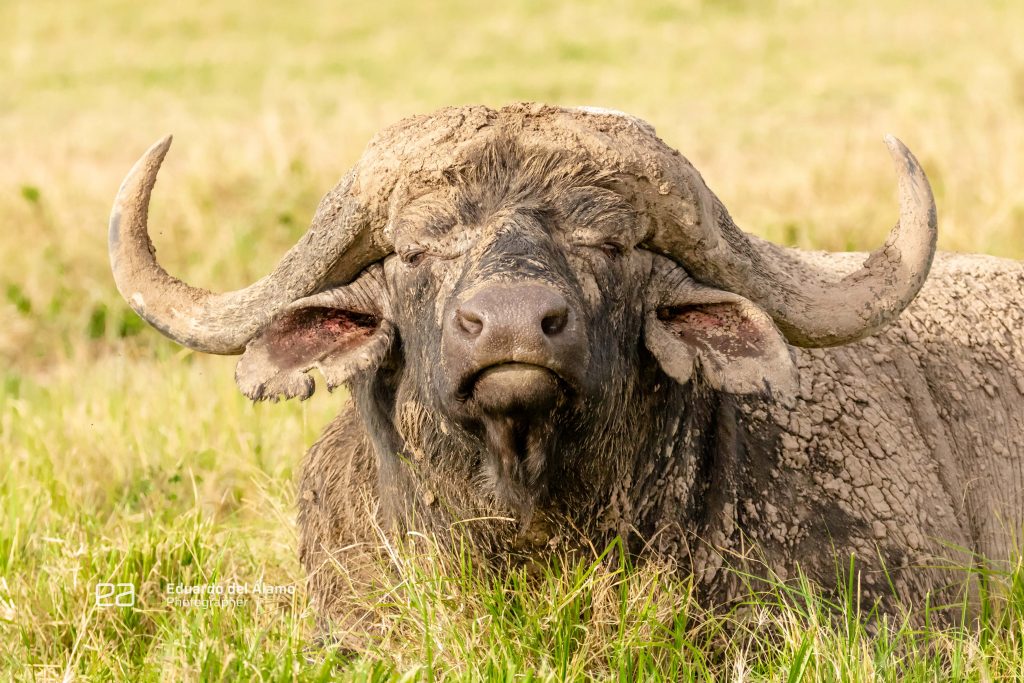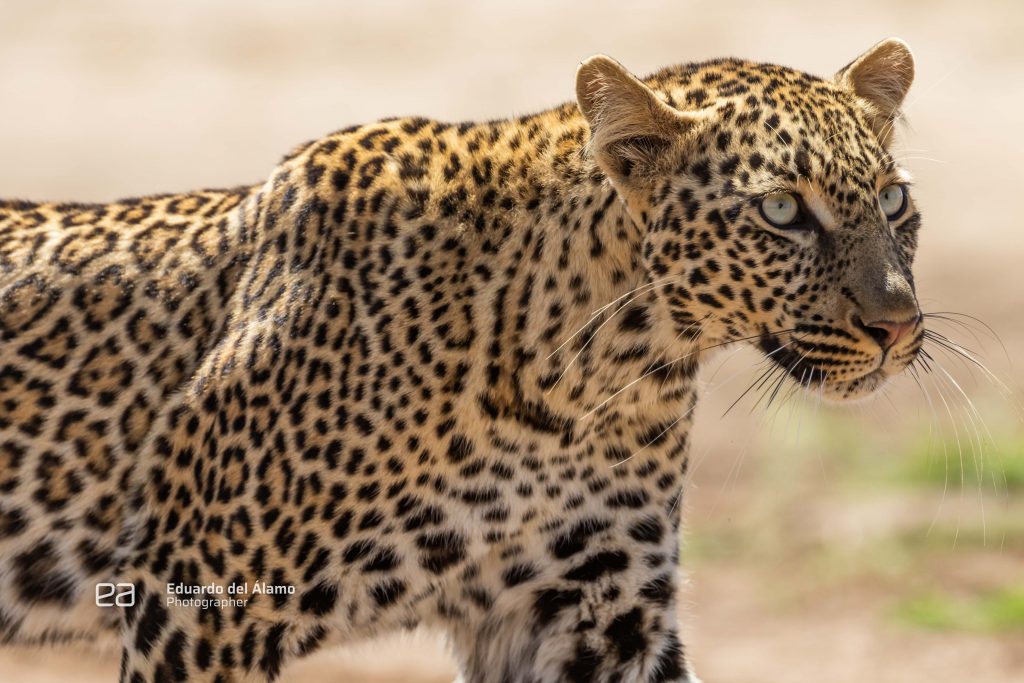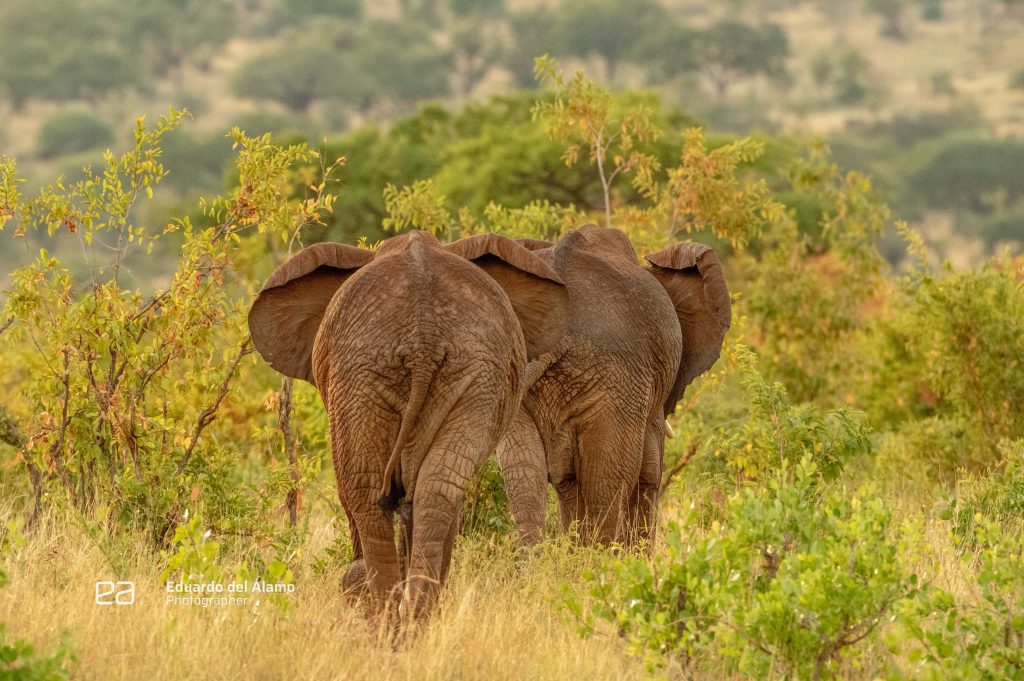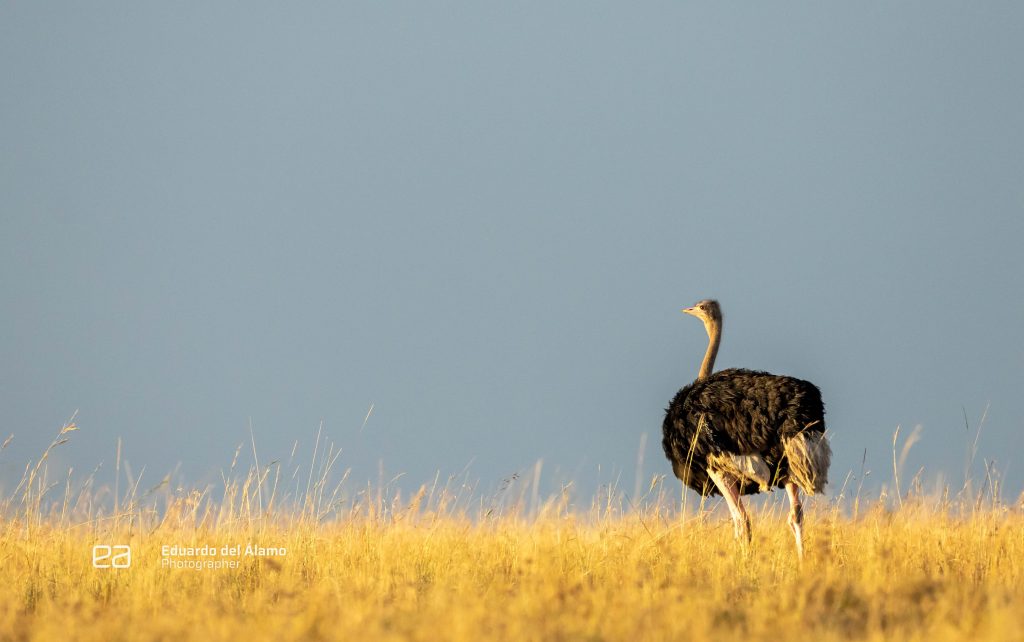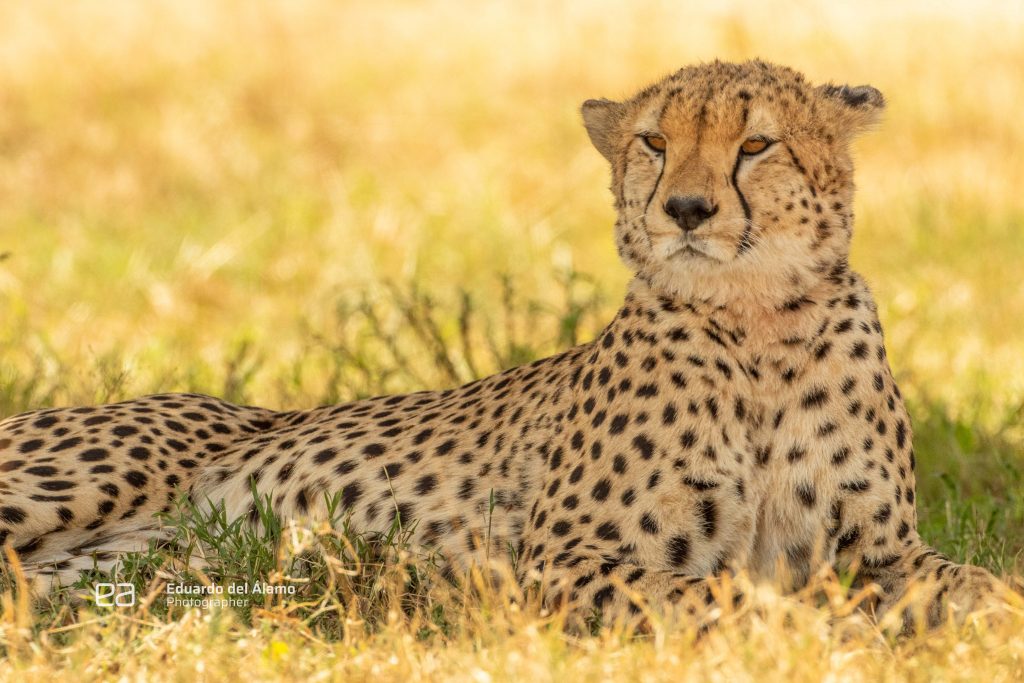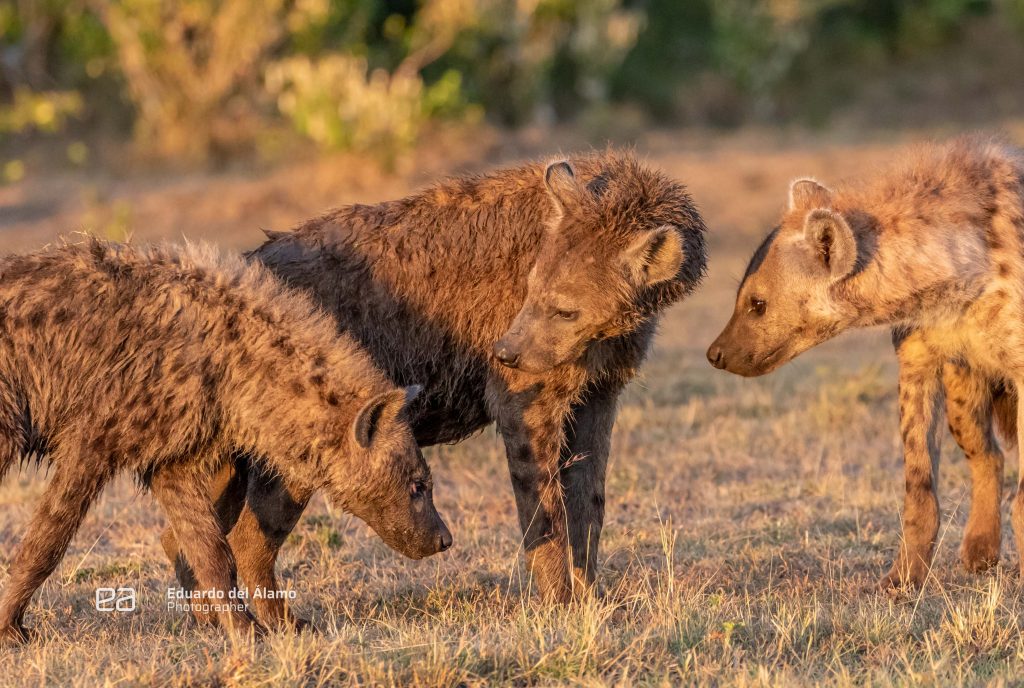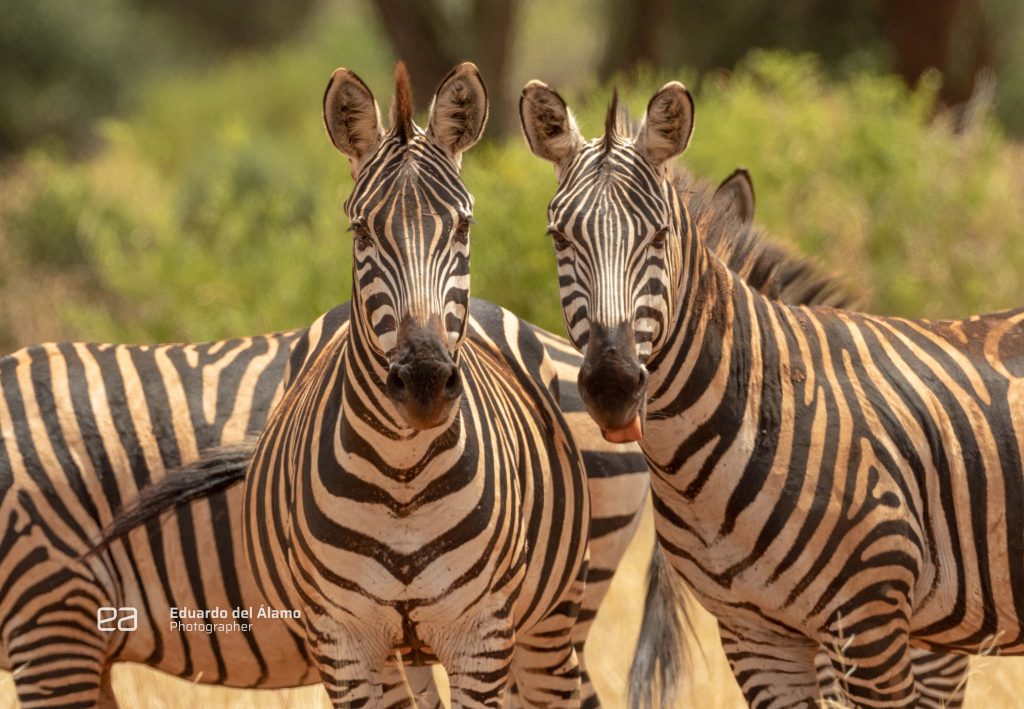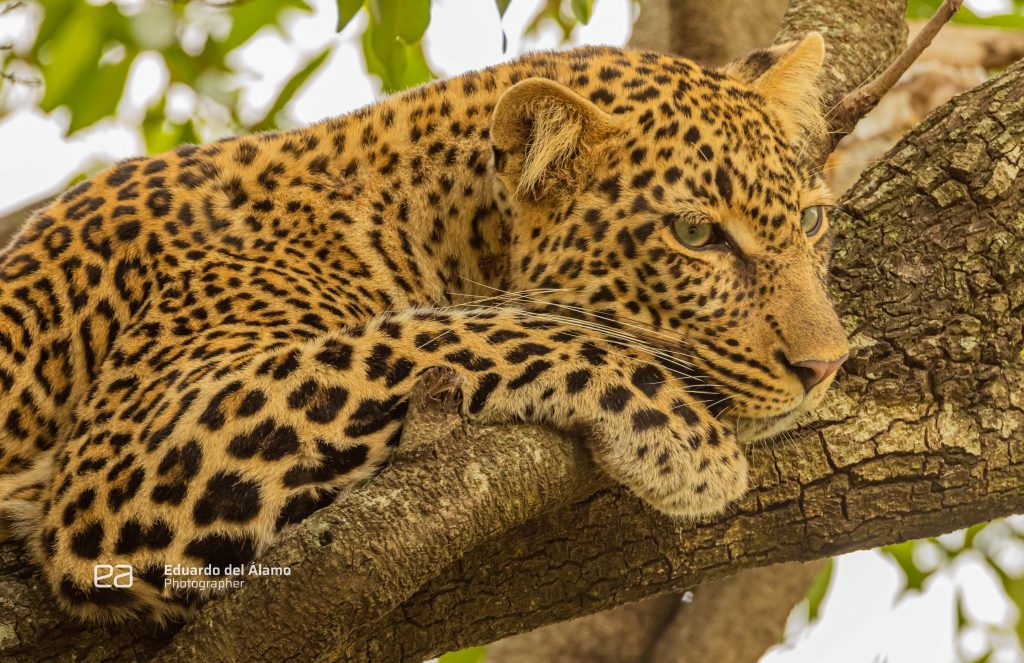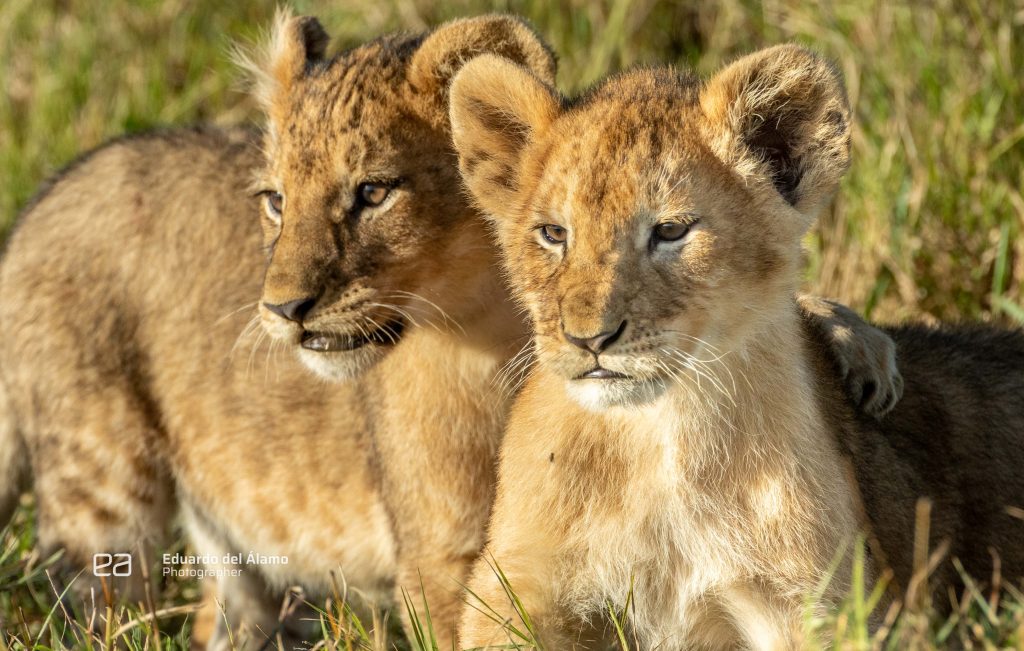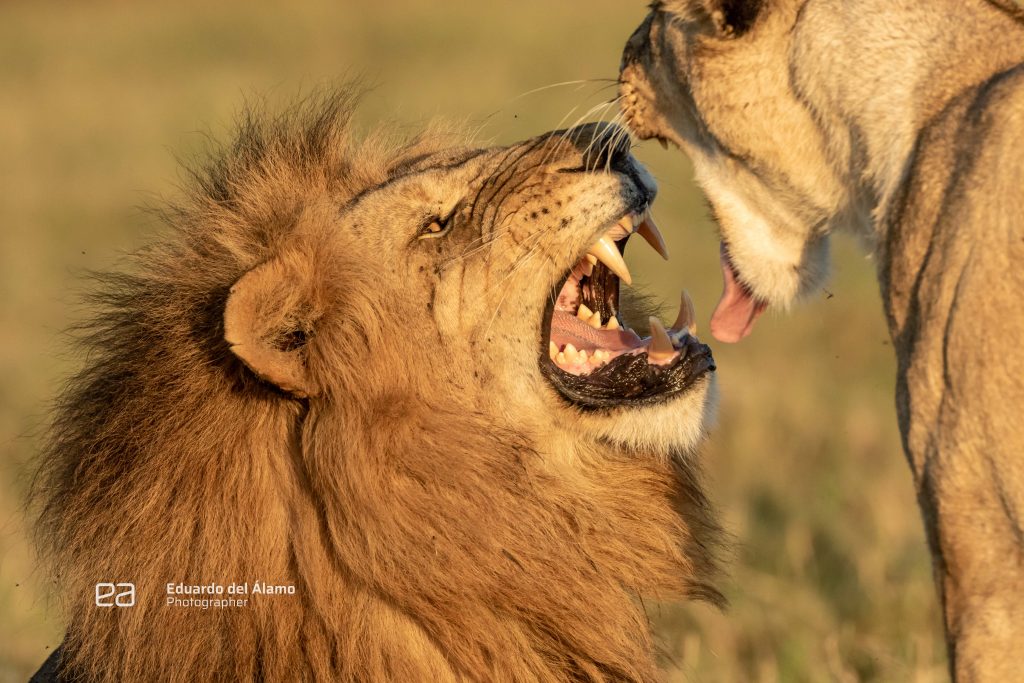Email: Karibu[at]ssa
DESTINATION HIGHLIGHTS
KENYAN COAST
NORTH COAST
SOUTH COAST
THE GREAT MAASAI MARA
Dream of Africa and chances are that you dream of the Masai Mara.
The Greater Mara Ecosystem encompasses areas known as the Maasai Mara National Reserve, the Mara Triangle, and several Maasai Conservancies, including: Koiyaki, Lemek, Ol Chorro Oirowua, Olkinyei, Naibosho, Olare Motorogi, Siana, Olarro Maji Moto, Ol Derkesi and Pardamat. There are no artificial boundaries (fences) surrounding all these areas – the wild animals roam free from one to the other.
The Mara Triangle covers 510 km², about one-third of the total area of the Maasai Mara National Reserve. The unique feature of Mara Triangle is the Oloololo Escapement, The Mara River and the International Kenya-Tanzania boundary which forms a triangular shape.
Mara Triangle has one of the highest densities of wild life in the world and on a lucky day you will be able to view all the big five in less than 2km2. The reserve is also a home of cheetah, Wildebeest, Zebra, giraffe, rock hyrax and many more.
Mara Serena Safari Lodge and Little Governors' Camp are the only accommodations inside the Mara Triangle. There is also a small number of exclusive camps and lodges, located on the fringes of the Mara Triangle, that offer game drives in the Triangle.
The Mara North Conservancy is a stunning wilderness area of 69,160 acres. It’s the largest conservancy and a vital part of the Maasai Mara ecosystem as it forms the north-western zone, bordering the Maasai Mara National Reserve. It states its aim as to create a best practice, world-class conservancy with long-term commitments to the environment, wildlife, and local communities. The Conservancy is a partnership between fourteen member camps and 666 landowners.
The Conservancy is one of the most populated wildlife areas within the Maasai Mara. It is home to the Leopard Gorge, a vital birthing and maternity ground for the big cats, as well as the scenic Lemek Hills, an important refuge to highly threatened African wild dogs. During the Loita Hills migration (December to May), thousands of local wildebeest come to the Mara North Conservancy.
The Koiyaki and Lemek ranch group which is located to the north of Masai Mara National Reserve consists of Koiyaki Ranch (89,000ha) and Lemek Ranch (49,707ha).
The trust which runs the group ranch is managed totally by local Maasais; there are 2,000 members in Koiyaki, and 1,029 members in Lemek. Some of the members privately own a ranch within the area. This area is a natural reserve area and is called Protected area & Wildlife Service (PAWS).
Within the Koiyaki Lemek Ranch, there are 4 lodges, David Livingstone lodge, Mara Buffalo, African Safari camp, Olmakau/Royal camp and several tented camps.
North of the Mara Triangle, Olchorro Oirowua Conservancy covers 15,765 acres and is a partnership between 170 landowners and 4 tourism camps.
Fairmont Mara Safari Club, which is located in the Conservancy, together with the Local Land Owners have taken the lead in investing in human and wildlife welfare in order to secures and protects the surrounding ecosystem.
Olchorro Oirowua Conservancy is home to two wide-mouth Rhinos; Kofi Annan and Queen Elizabeth; the two Rhinos are kept under tight security by a group of dedicated conservancy and Kenya Wildlife Service rangers at the foot of Kileloni Hill in Maasai Mara.
The 18,700 acre Ol Kinyei Conservancy is located within the Serengeti-Mara eco-system, north-east of Maasai Mara Game Reserve. Ol Kinyei is renowned for its unspoilt and breathtaking scenery with diverse terrain offering on one hand open savannah plains and rolling hills on the other.
Ol Kinyei is on a tranche of land belonging to a Maasai community who leased it to Gamewatchers Safaris to be set aside for the purposes of wildlife conservation. It is home to only two small, safari camps, the Porini Mara Camp and Porini Cheetah Camp, both of which accommodate a maximum of only 12 guests each at any given time – making this not only an exclusive experience but one that respects the principles of eco-tourism. There are also have two small mobile camps (high season only) the Gamewatchers Adventure Camp and the Porini Bush Camp.
Apart from our small eco-camps, no other tourist vehicles are allowed into the Conservancy so guests have the thousands of acres in the conservancy to themselves; guests also have game drives in the neighbouring Naboisho Conservancy, also supported by Gamewatchers Safaris by contributing to the land lease payments to the local Maasai community.
The land, with its abundance of water sources in the form of springs, streams and rivers, coupled with spectacular views across the Mara plains, is home to a wide variety of animal species. There is a resident lion pride and other individual lions are also present while several leopards have their territories within the conservancy and are often sighted by guests from Porini Mara Camp on evening or early morning drives. Cheetahs are frequently seen and it is not rare to come across large numbers of giraffe as well as Cape buffalo and elephants.
The conservancy is a great location from which to observe the Serengeti Wildebeest Migration (generally in the Mara from June to October), and there is another Wildebeest Migration which comes in from Kenya’s Loita Plains, moving into Ol Kinyei Conservancy earlier, usually by January.
The annual wildebeest calving takes place in Ol Kinyei Conservancy during February and March when the plains of the conservancy are teeming with wildebeest before they move on through Naboisho Conservancy and into Olare Motorogi and the Mara Reserve.
The local Maasai make first class guides and are on hand to share their experience on what to see and do.
The Mara Naboisho Conservancy is a private 50,000 acre community pastoralist and wildlife conservation area located that was carved out of the Koyaki-Lemek Group Ranch. It borders the world famous Maasai Mara National Reserve to the southwest, the Olare Orok Conservancy to the west, and the Ol Kinyei Conservancy to the east.
The Mara Naboisho Conservancy limits the number of beds per acre and also the number of tourists who may enter the area, thereby reducing the crowds of vehicles. Guests often find themselves the only vehicle around, giving spectacular, unspoiled views of exciting wildlife. The Conservancy has one of the highest densities of lions in Africa. And because the Mara Naboisho Conservancy is not governed by the same rules that apply to national parks, there is the flexibility to experience something truly profound and to see and do things not possible in the Maasai Mara National Reserve. The passion and expertise of the guides at the conservancy facilitate this experience.
The conservancy provides the opportunity to conserve the land and wildlife, whilst simultaneously creating wealth for the Maasai landowners. By visiting the Mara Naboisho Conservancy, you will be playing a part in protecting the cultural heritage of the local Maasai community and improving their access to vital services.
Bordering the Maasai Mara Reserve to the north, Olare Motorogi Conservancy (a combination of Olare Orok and Motorogi conservancies) covers an approximate area of 33, 386 acres and is a strategic buffer zone for the Maasai Mara National Reserve and key wildlife migration corridors. Built upon a partnership with 288 landowners, Olare Motorogi management has worked with the local people who agreed to move their homes and only allow carefully managed cattle grazing, leaving the wildlife completely unimpeded.
The conservancy offers pleasant and exclusive tours in a pristine environment, with a rich and diverse wildlife population of both predators and herbivores, including the Mara’s famous big cats and many elephants. Rhino and wild dog have also been sighted, and it is becoming a very viable habitat for these two highly endangered species, given the right sort of protection through sensitive tourism development.
There are five luxury camps within the conservancy, catering for anyone’s tented tastes. Porini Lion Camp and Kicheche Bush Camp being the Conservancy founder members were joined by Mara Plains Camp, Olare Mara Kempinski and Mahali Mzuri.
All offer exclusive wildlife-, campfire- and canvas experiences to their clients. None of these camps is larger than 24 beds and all abide by environmentally friendly guides of construction and operation in the Conservancy’s Code of Conduct.
Mara Siana Conservancy is a nascent community conservancy adjacent to the eastern side of Maasai Mara National Reserve. The Conservancy covers 10,000 acres and is a partnership between 1,517 landowners and 15 tourism camps.
Operationalization of the Mara Siana conservancy began in 2015, after 1,200 landowners of the sub-divided Siana Group Ranch decided to set aside 6.5 acres each to establish the conservancy. The community decided to jointly form a conservancy so as to benefit from tourism and have guaranteed pasture for their livestock. They also sought inclusivity in the management of the conservancy to guarantee equitable benefit sharing.
The Pardamat Conservation Area is premised on a mixed conservation model to ensure the survival of the greater Maasai Mara ecosystem and generation of economic benefits for local communities. Through this model, Pardamat community’s 850 landowners have legally registered their 26,000 hectares of land as a wildlife conservation area.
The Pardamat area is important to the wellbeing of the greater Mara ecosystem. It is adjacent to Naboisho, Olkinyei, Lemek and Mara North conservancies and serves as a migration route from the Loita plains that connects the four established conservancies to the Mara Triangle and then to the Maasai Mara National Reserve. Additionally, its hilly and forested terrain is cherished by elephants for browsing as well as open spaces, against rising threats, like unplanned development and settlements as well as fencing.
Olarro Conservancy in Maji Moto, Loita Hills of southwest Kenya, is a 4-hour drive from Nairobi and on the way to the world-famous Masai Mara National Reserve.
Olarro North and South Conservancies together cover 24,500 acres and are a partnership between 2,200 landowners and 2 tourism camps.
Olarro Conservancy is instrumental and extremely active in various areas of conservation, Socio-economic improvements, anti-poaching, human/wildlife conflict resolution and wildlife rescues, currently mostly elephant, amongst other duties and has developed a model for a network of land conservancy zones focused on securing the integrity of key ecosystem components.
Olarro works hard under difficult conditions to protect their ecologically important zones such as wildlife corridors, grassland reserves, watersheds and springs and the Conservancy’s good stewardship of their ecosystem also equates with meaningful sustainable revenue and managed projects to improve the communities living conditions. Never a dull moment!
The drive from Nairobi includes the stunning views from and descent down the Great Rift Valley Escarpment. For travelers intending to visit the Masai Mara, Olarro and Maji Moto are perfect places to rest and acclimate yourself to the region, and its only one hour from the Sekenani Gate – the main entry point to the eastern side of Maasai Mara Game Reserve.
Olderkesi Conservancy is adjacent to the southeast corner of the Maasai Mara National Reserve and just north of Tanzania’s Serengeti National Park. It is a place of incredible natural beauty, abundant wildlife, and innovative conservation thinking.
The conservancy is managed by two trusts: Cottar’s Wildlife Conservancy Trust (CWCT) and Olderkesi Wildlife Community Trust (OCWCT). These two groups have worked closely together over the past 20 years to create a vital, truly sustainable conservancy management plan.
Olderkesi Conservancy is owned by the Maasai but it is rented by Cottar’s Wildlife Conservancy Trust. The Maasai agree to live on other sections of their land, supported in part by the payments from the Conservancy.
Enonkishu is situated on the northern most point of the Greater Mara Ecosystem covering an area of 5,928 acres, two tourism partners and 42 landowners. The main focus of the conservancy is livestock improvement through innovative cattle management programs, running alongside novel tourism projects. Indeed, the name Enonkishu – Maa for healthy cattle – was chosen by community elders as the description of the ideal livestock herd.
The habitat comprises wooded acacia savannah with open plains on flat plateaus, riverine acacia forest and rocky, undulating hills which provide a varied habitat for browsing and grazing ungulates, as well as hideout thickets for the predators. The Mara River runs alongside the conservancy.
There is a large number of giraffe and resident buffalos that live close to the Olerai boundary along the Mara River. Elephants frequent the conservancy and there is a pride of lion that is based on the edge of Enonkishu and Ol Choro Oiroua. There are many hippos and crocodiles in the section of river that borders the conservancy and the riverine forests provide an area popular with leopards. Rare species such as Aardvark, Caracal, serval cat and Aardwolf are occasionally found. Colobus monkeys have been spotted in the valleys on the Kileleoni Hill and there have also been sightings of wild dogs in the conservancy.
CLIMATE AND WEATHER
The climate in Maasai Mara National Reserve is pleasantly warm, with cool nights, all year round. The area is located just south of the Equator, but at an altitude between 1,500 and 1,900 meters (5,000 and 6,200 feet). Temperatures are slightly higher from October to March, while they are slightly cooler from June to August. At night, it can be a bit cold, and the temperature can drop below 10 °C (50 °F), especially from June to August.
There are two rainy seasons, one that lasts about six weeks, from March to May (called ``the long rains``), and the other that lasts about two weeks occurs from October to December (called ``the short rains``).
BEST TIME TO VISIT
Maasai Mara National Reserve is quite popular from June to October during the GREAT WILDEBEEST MIGRATION; although it is a year-round destination. There are plenty of resident wildlife, particularly within the Mara Triangle.
The Masai Mara offers good bird-watching any month of the year, but the best time is from November to April when the migrants from Europe and north Africa arrive. This coincides with the wet season when many species can be seen in breeding plumage.
WHAT TO PACK
Clothing
For the Hot Weather
Hat
Earth-coloured light pants (Khaki) – long or knee-length pants
Earth-coloured long-sleeved shirts/blouses
Comfortable breathable shoes with a sturdy sole (similar to hiking boots).
Sunscreen
For the Cold Weather
Layering is the motto. While you do not require heavy clothing, it is wise to carry a sweater or two to keep you warm during the chilly evenings. Maasai shukas (shawls/wrappers) work extremely well around bonfires.
Hat
Earth-coloured light pants (Khaki) – long or knee-length pants
Earth-coloured long-sleeved shirts/blouses
Comfortable breathable shoes with a sturdy sole (similar to hiking boots).
Sunscreen
Equipment
Cameras
Binoculars
Power banks
WHAT TO SEE
The Great Migration
Undoubtedly one of the most dramatic spectacles of the world, the Great Migration is the annual trek of close to a million herbivores from Serengeti National Park in Tanzania into the Masai Mara Game Reserve in Kenya in search of greener pastures, literally. The nail-biting Mara River crossings are an absolute must for every wildlife enthusiast’s bucket list.
Big Cat Diary
The Masai Mara boasts one of the highest lion densities in world, so it should come as no surprise that the world-famous nature documentary, Big Cat Diary, is filmed in the Mara. Set out in search of the legendary Marsh pride and the beloved, oh-so photogenic, Scarface himself.
Birds
There are more than 500 resident bird species recorded in the Maasai Mara, that are complemented with Migratory birds from November to April.
WHAT TO DO
Game drives
With or without the Great Migration, the Masai Mara Game Reserve is, undeniably, one of the parks with a high wildlife concentration in Africa. A game drive through the plains will never disappoint.
Birdwatching
The Masai Mara isn’t one of Kenya’s birding hotspots. However, with more than 500 bird species recorded, this isn’t a bad place to mark off a lot of Kenya’s savannah species from your bird list. The park is particularly rich in raptors with 57 species present. Bateleurs can often be seen soaring above the grassy plains and predator kills are a good place to find up to six species of vultures scavenging. Migratory birds are present from November to April.
Walking Safari
Set out on a once-in-a-lifetime expedition to truly experience the Masai Mara. With great vistas of the plains yonder, breath the fresh air and learn about the little know fauna and flora.
Out of Africa (As an alternative to walking safari)
Retrace the footsteps of Out of Africa, the epic film that made the entire world fall in love with Kenya.
Equestrian Safari
Like the explorers of the years gone by, this is a truly unique way to experience the Mara. Blend in the plains and stroll right by dazzles of zebra, journeys of giraffe and, if the time is right, the mighty herds of the Great Migration.
Sundowner Picnic
Drive up onto the aptly named escarpment, meaning “zig zag” in Maa language, for the most unforgettable sundowners overlooking the vast Mara plains, as well as the Serengeti in the distance. As the sun gently dips over the horizon, stand around a blazing fire, complete with delicious snack and a full bar and bartender, and watch in awe as Maasai warriors perform their traditional song and dance.
Balloon Safari in The Masai Mara
Get a bird’s eye view of Mara – the sweeping plains dotted with acacia tree and the occasional kopje that form the landscape in addition to the staggering wildlife – at dawn on a hot air balloon. Upon landing, enjoy a lavish champagne bush breakfast before returning to your hotel with an en route game drive.
Starting Time: 06.30 Hrs
Duration: 1 Hr
Maasai Cultural Tour
No journey to the Masai Mara would be complete without an authentic cultural experience that gets you up close and personal with the fascinating Maasai people. Learn first-hand the vibrant culture and the traditional way – they will invite you into their humble mud and stick manyattas (homesteads) and reveal their pastoral world and ancient, time-honoured traditions. The visits will be undertaken at a convenient time in during the safari.
NOTE: This excursion is not OFFERED on SET DEPARTURES!!
Duration: 1 - 2 Hrs
FEATURED SAFARIS
Rhumba Kenya
Sakata Kenya
Zouketa Kenya & Tanzania Combined
NB: Our Safaris are combinable with the Beach
MAASAI MARA NATIONAL RESERVE
Dream of Africa and chances are that you dream of the Masai Mara.
This huge expanse of gently rolling grassland – specked with flat-topped acacia trees and trampled by massive herds of zebras and wildebeest – is the ultimate African cliché. But for once the reality lives up to the image and the Masai Mara, which comprises not just the famous reserve but also around a dozen community conservancies, several group ranches and numerous Maasai villages, is for many people not just the highlight of their Kenyan adventure but the very reason they came in the first place.
The reserve covers 583 square miles (1510 square kilometres) of outstanding wilderness in South West Kenya. With one of the highest diversity of species, and concentrations of animals, the acacia-dotted plains of the Mara offer wonderful scenery and a spectacular abundance of wildlife. Elephants, buffalo, wildebeest, topi, giraffes, hartebeest, serval cats, bat eared foxes; regal black- maned lions, cheetahs, leopards, hyenas and jackals; monkeys and baboons, vultures, secretary birds, saddle bill storks, hundreds of migratory birds; countless pods of hippos around every bend of the Mara River, carefully watched by the other denizens of the rivers in the Masai Mara - the crocodiles, infamous for their spectacular role in the “Greatest Wildlife Show on Earth”- the annual wildebeest migration between the Serengeti and the Masai Mara, in which millions of wildebeest, zebra and topis brave the river, and the predators encountered daily, in their continuous annual treks in search of water and grazing, coming up to the Mara from Serengeti in the neighbouring Tanzania.
The Mara Triangle lies in the western sector of Masai Mara where the Mara River forms a natural boundary line that embraces one-third of the Mara Reserve. Most of the Mara Triangle is part of the main reserve and is not a private conservancy. In addition to the dividing river, the area of the Mara Triangle is also defined by the Oloololo Escarpment (Siria). The area covers 510 sq. Km and is managed by a non-profit organisation – Mara Conservancy. Due to its superb location, animals wander freely between the neighbouring wildernesses; however, the river acts a natural fence that keeps most of the wildlife in the triangle. This outback also boasts an incredible, diverse landscape that includes rivers, streams, swamps, plains, volcanic features and much more. Being the entry and exit point for the Migration, it is the most strategic location for game viewing drive in Masai Mara especially during the migration season.
CLIMATE AND WEATHER
The climate in Maasai Mara National Reserve is pleasantly warm, with cool nights, all year round. The area is located just south of the Equator, but at an altitude between 1,500 and 1,900 meters (5,000 and 6,200 feet). Temperatures are slightly higher from October to March, while they are slightly cooler from June to August. At night, it can be a bit cold, and the temperature can drop below 10 °C (50 °F), especially from June to August.
There are two rainy seasons, one that lasts about six weeks, from March to May (called ``the long rains``), and the other that lasts about two weeks occurs from October to December (called ``the short rains``).
BEST TIME TO VISIT
Maasai Mara National Reserve is quite popular from June to October during the GREAT WILDEBEEST MIGRATION; although it is a year-round destination. There are plenty of resident wildlife, particularly within the Mara Triangle.
The Masai Mara offers good bird-watching any month of the year, but the best time is from November to April when the migrants from Europe and north Africa arrive. This coincides with the wet season when many species can be seen in breeding plumage.
WHAT TO PACK
Clothing
For the Hot Weather
Hat
Earth-coloured light pants (Khaki) – long or knee-length pants
Earth-coloured long-sleeved shirts/blouses
Comfortable breathable shoes with a sturdy sole (similar to hiking boots).
Sunscreen
For the Cold Weather
Layering is the motto. While you do not require heavy clothing, it is wise to carry a sweater or two to keep you warm during the chilly evenings. Maasai shukas (shawls/wrappers) work extremely well around bonfires.
Hat
Earth-coloured light pants (Khaki) – long or knee-length pants
Earth-coloured long-sleeved shirts/blouses
Comfortable breathable shoes with a sturdy sole (similar to hiking boots).
Sunscreen
Equipment
Cameras
Binoculars
Power banks
WHAT TO SEE
The Great Migration
Undoubtedly one of the most dramatic spectacles of the world, the Great Migration is the annual trek of close to a million herbivores from Serengeti National Park in Tanzania into the Masai Mara Game Reserve in Kenya in search of greener pastures, literally. The nail-biting Mara River crossings are an absolute must for every wildlife enthusiast’s bucket list.
Big Cat Diary
The Masai Mara boasts one of the highest lion densities in world, so it should come as no surprise that the world-famous nature documentary, Big Cat Diary, is filmed in the Mara. Set out in search of the legendary Marsh pride and the beloved, oh-so photogenic, Scarface himself.
Birds
There are more than 500 resident bird species recorded in the Maasai Mara, that are complemented with Migratory birds from November to April.
WHAT TO DO
Game drives
With or without the Great Migration, the Masai Mara Game Reserve is, undeniably, one of the parks with a high wildlife concentration in Africa. A game drive through the plains will never disappoint.
Birdwatching
The Masai Mara isn’t one of Kenya’s birding hotspots. However, with more than 500 bird species recorded, this isn’t a bad place to mark off a lot of Kenya’s savannah species from your bird list. The park is particularly rich in raptors with 57 species present. Bateleurs can often be seen soaring above the grassy plains and predator kills are a good place to find up to six species of vultures scavenging. Migratory birds are present from November to April.
Walking Safari
Set out on a once-in-a-lifetime expedition to truly experience the Masai Mara. With great vistas of the plains yonder, breath the fresh air and learn about the little know fauna and flora.
Out of Africa (As an alternative to walking safari)
Retrace the footsteps of Out of Africa, the epic film that made the entire world fall in love with Kenya.
Equestrian Safari
Like the explorers of the years gone by, this is a truly unique way to experience the Mara. Blend in the plains and stroll right by dazzles of zebra, journeys of giraffe and, if the time is right, the mighty herds of the Great Migration.
Sundowner Picnic
Drive up onto the aptly named escarpment, meaning “zig zag” in Maa language, for the most unforgettable sundowners overlooking the vast Mara plains, as well as the Serengeti in the distance. As the sun gently dips over the horizon, stand around a blazing fire, complete with delicious snack and a full bar and bartender, and watch in awe as Maasai warriors perform their traditional song and dance.
Balloon Safari in The Masai Mara
Get a bird’s eye view of Mara – the sweeping plains dotted with acacia tree and the occasional kopje that form the landscape in addition to the staggering wildlife – at dawn on a hot air balloon. Upon landing, enjoy a lavish champagne bush breakfast before returning to your hotel with an en route game drive.
Starting Time: 06.30 Hrs
Duration: 1 Hr
Maasai Cultural Tour
No journey to the Masai Mara would be complete without an authentic cultural experience that gets you up close and personal with the fascinating Maasai people. Learn first-hand the vibrant culture and the traditional way – they will invite you into their humble mud and stick manyattas (homesteads) and reveal their pastoral world and ancient, time-honoured traditions. The visits will be undertaken at a convenient time in during the safari.
NOTE: This excursion is not OFFERED on SET DEPARTURES!!
Duration: 1 - 2 Hrs
DESTINATION HIGHLIGHTS
KENYAN COAST
NORTH COAST
SOUTH COAST
FEATURED SAFARIS
Rhumba Kenya
Sakata Kenya
Zouketa Kenya & Tanzania Combined
NB: Combinable with Beach





